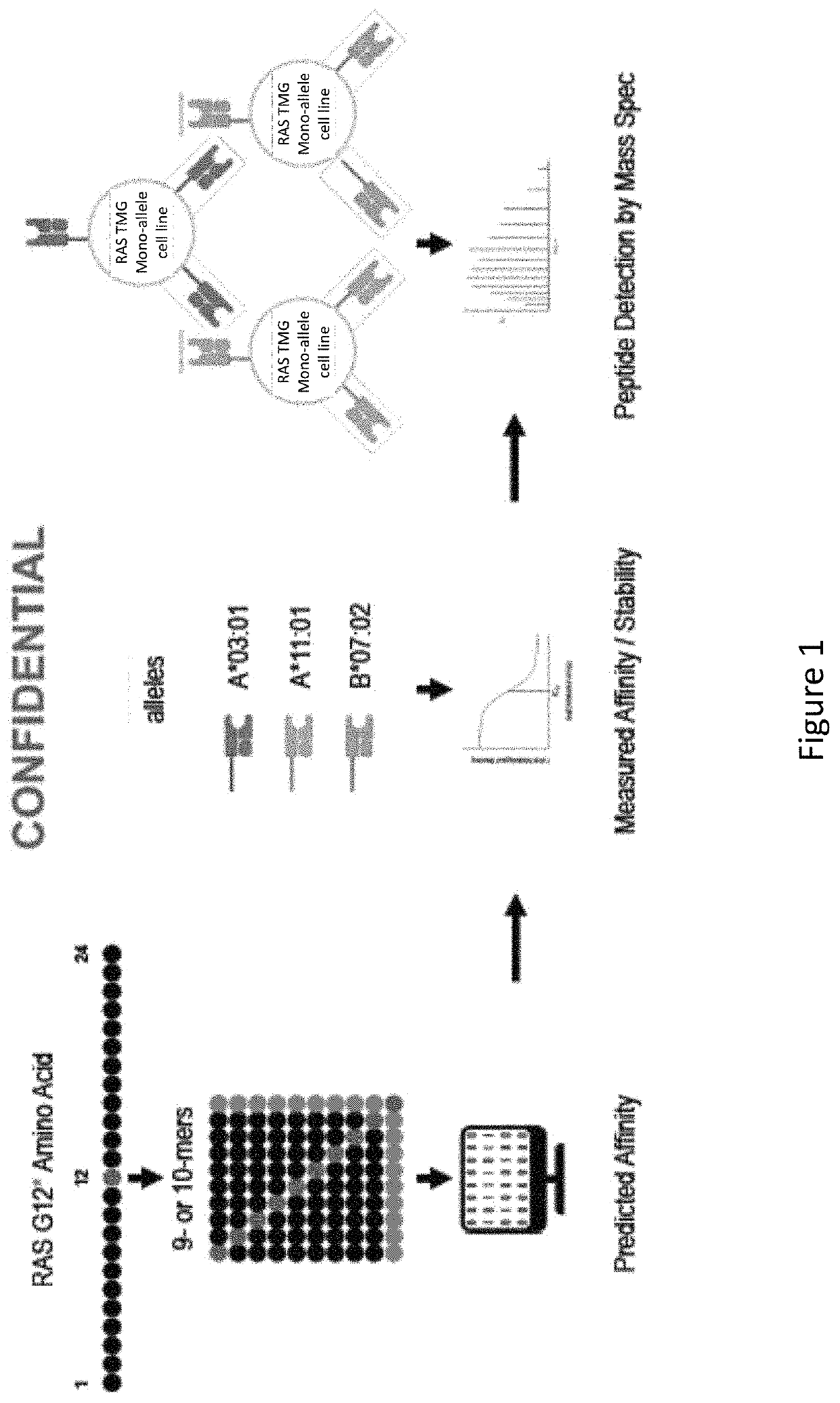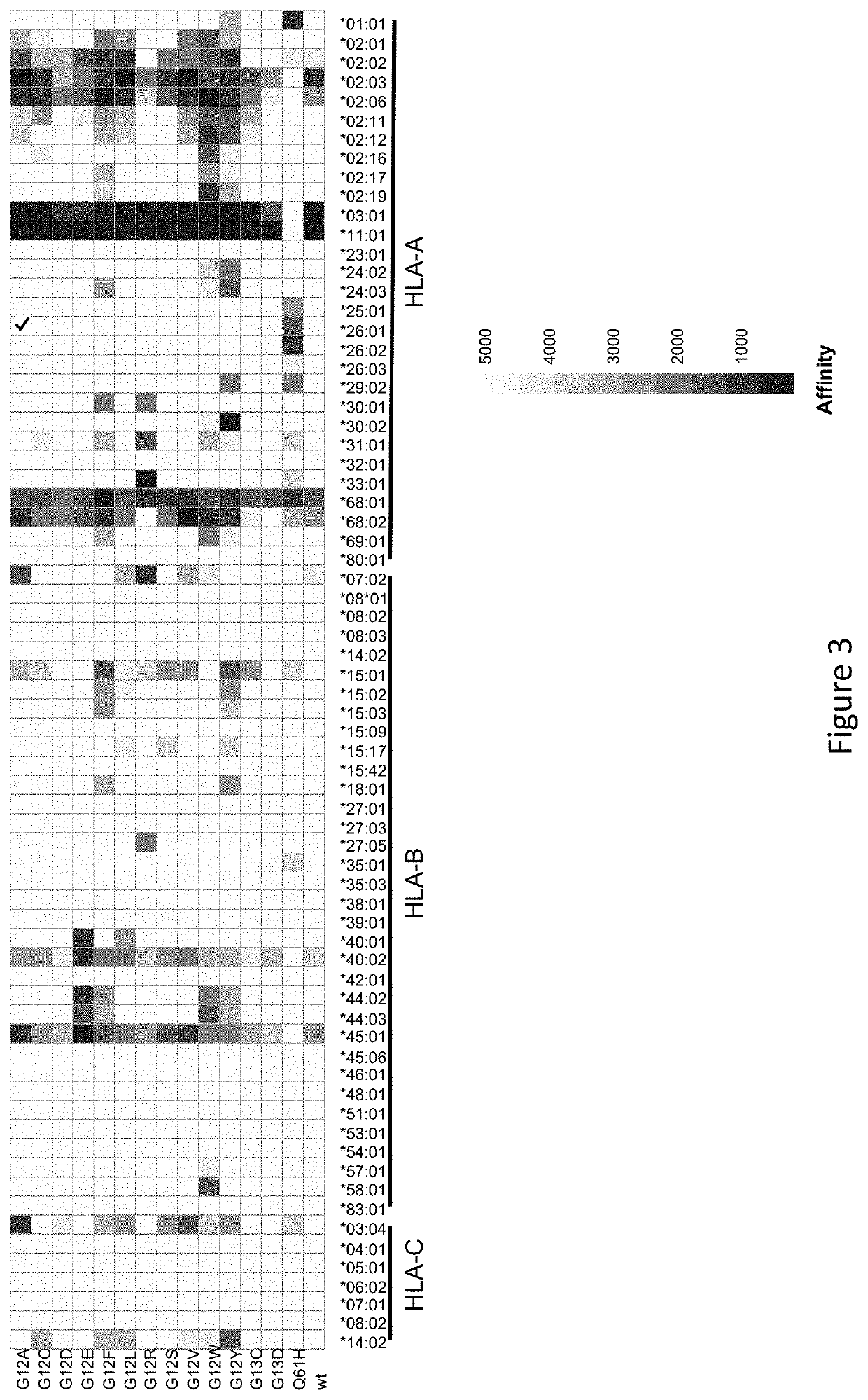Compositions and Methods for Targeting Mutant RAS
- Summary
- Abstract
- Description
- Claims
- Application Information
AI Technical Summary
Benefits of technology
Problems solved by technology
Method used
Image
Examples
experimental examples
[0522]The invention is now described with reference to the following Examples. These Examples are provided for the purpose of illustration only and the invention should in no way be construed as being limited to these Examples, but rather should be construed to encompass any and all variations which become evident as a result of the teaching provided herein.
[0523]Without further description, it is believed that one of ordinary skill in the art can, using the preceding description and the following illustrative examples, make and utilize the compounds of the present invention and practice the claimed methods. The following working examples therefore and are not to be construed as limiting in any way the remainder of the disclosure.
example 1
ation of mRAS Neoantigens
[0524]As described herein, various computational and proteomic studies were done to identify mRAS neoantigens and their interactions with HLA types. FIG. 1 is a schematic that depicts the discovery strategy for mutant RAS epitopes, wherein an in silico model is used to predict affinity of mRAS peptides to MHC, followed by experiments to measure the affinity / stability of interactions and to detect peptides by mass spectrometry.
[0525]An in silico study was done to predict mRAS neoantigens, utilizing antigen.garnish software which analyzes human or murine DNA missense mutations, insertions, deletions, and fusions and computationally predicts neoepitopes uses 7 validated algorithms. The model outputs neoepitopes by MHC I / II binding affinity. For example, as shown in FIG. 2, the model was used to predict 9-10mer neoepitopes that contain a mutation at a position corresponding to G12 in RAS.
[0526]As shown in FIG. 3 and FIG. 4A and FIG. 4B, the model predicted bindi...
example 2
[0532]As described herein, experiments were conducted to assess the immunogenicity of mRAS peptide-MHC recognition. PMBCs were isolated from normal donors having selected HLA types (HLA-A02, HLA-A03, HLA-A11, and HLA-B07) and stimulated as shown in FIG. 11. Experiments using IFN-γ ELISPOT assays were conducted to evaluate the CD8+ T cell responses. The summary of mRAS CTL responses is shown in FIG. 12 and FIG. 13A-FIG. 13F.
[0533]Additional experiments using pMHC-multimer staining were conducted on T cell cultures to identify mRAS-specific T cells (FIG. 14). The experiments also showed that the mRAS T cell responses are highly specific (FIG. 15). Experiments using various doses of B7-G12R was used to demonstrate the observed responses are of high affinity (FIG. 16).
[0534]Experiments were also done to examine whether the B7-G12R CTL response can kill a G12R+ PDA cell line. As shown in FIG. 17, PSN1 cells that are modified to express HLA-B*07:02 are able to be killed v...
PUM
| Property | Measurement | Unit |
|---|---|---|
| Fraction | aaaaa | aaaaa |
| Composition | aaaaa | aaaaa |
| Nucleic acid sequence | aaaaa | aaaaa |
Abstract
Description
Claims
Application Information
 Login to View More
Login to View More - R&D
- Intellectual Property
- Life Sciences
- Materials
- Tech Scout
- Unparalleled Data Quality
- Higher Quality Content
- 60% Fewer Hallucinations
Browse by: Latest US Patents, China's latest patents, Technical Efficacy Thesaurus, Application Domain, Technology Topic, Popular Technical Reports.
© 2025 PatSnap. All rights reserved.Legal|Privacy policy|Modern Slavery Act Transparency Statement|Sitemap|About US| Contact US: help@patsnap.com



